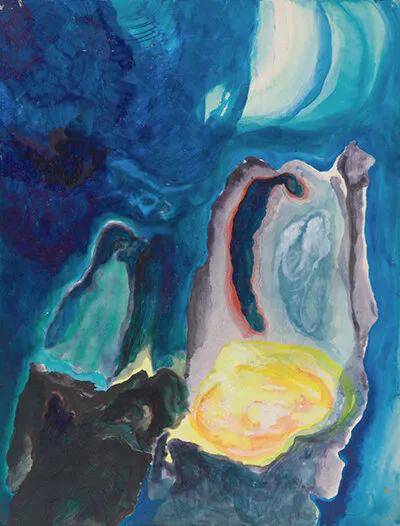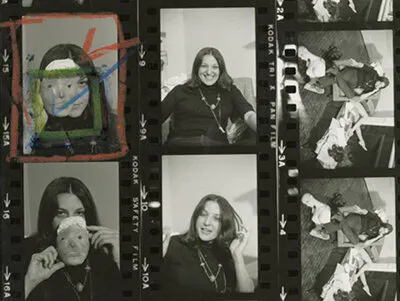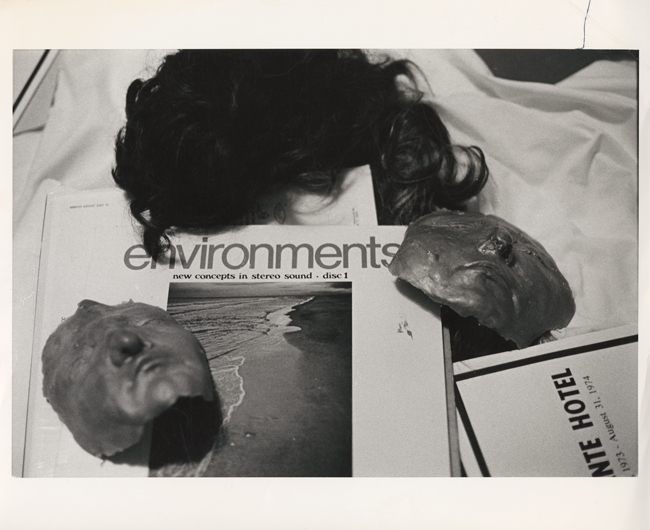A first-of-its-kind series at the Cantor Arts Center, Archive Rooms, examines artists’ sources of inspiration and working processes through the ephemera preserved in their archives. Opened in July, the pilot presentation features the archives of Bernice Bing and Lynn Hershman Leeson from the Department of Special Collections at Stanford University Libraries. In small, single-gallery, single-artist installations, evocative objects such as photographic prints and contact sheets, spiralbound journals and sketchbooks, correspondence and postcards, and videorecorded interviews inform the viewer’s understanding of the artists’ lives and artworks.

Bernice Bing, Big Sur 67', 1967. Image courtesy of Special Collections at Stanford University.
Archive Room: Bernice Bing is curated by Kathryn Cua, curatorial assistant for the Asian American Art Initiative. The Bernice Bing archive, donated to Stanford University Libraries in 2020, is a core collection for the Asian American Art Initiative and especially for the study and appreciation of the works of Asian American artists who lived in the San Francisco Bay Area. Over one hundred items of interest to art historians have been digitized and placed online.
“Bernice ‘Bingo’ Bing (1936-1998) came of age during a time when self-estrangement was a form of self-preservation,” Cua said. “Despite her prominence, Bing’s legacy is remembered largely by those who knew her, and until recently her artistic achievements received only minor institutional recognition. With Bing’s archives now at Stanford, however, we hope that public access to her papers raises awareness about her meaningful contributions to the Bay Area’s art ecosystem and American art history at large. Touching on theory, spirituality, and deep reflection, these archival objects reveal that Bing’s greatest project in life was herself.”

Lynn Hershman Leeson, Contact sheet from Forming a Sculpture Drama in Manhattan, 1974. Gelatin silver print. Image courtesy of Special Collections at Stanford University.
Archive Room: Lynn Hershman Leeson is curated by Maggie Dethloff, assistant curator of photography and new media. “Hershman Leeson’s archive, acquired by Stanford University Libraries starting in 2004, provides valuable insight into the artist’s important contributions to filmmaking and new media art and her prescient commentary on the relationship between people and technology,” Dethloff said.
“This installation of videos, photographs, and ephemera from the 1970s considers the artist’s consistent challenge to rethink what and where art can be, as well as the beginnings of her long-standing exploration of identity,” said Dethloff. Commenting on the archive’s significance in relation to Hershman Leeson’s long running performances as an alter ego named Roberta Breitmore and her use of wax casts of her own face combined with recordings of her breath, laughter, and speech, Dethloff added, “In these works, Hershman Leeson is and isn’t herself, and here’s the evidence to prove it.”

Lynn Hershman Leeson, Wax masks and wig in Chelsea Hotel, 1974. Gelatin silver print. Image courtesy of Special Collections at Stanford University.
“Deborah Cullinan, vice president for the arts, and Veronica Roberts, director of the Cantor Arts Center, suggested that we highlight the breadth of art historical resources at Stanford in the Rowland K. and Patricia S. Rebele Galleries,” Cua and Dethloff said. “We plan to have future presentations of Archive Rooms, each one highlighting a different artist whose archives are housed in Special Collections at Stanford University Libraries. In showcasing these archival presentations, we hope to give our audiences a deeper dive into the practices of the featured artists and show that there is so much insight that can be gained from an artist’s ephemera.”
Lindsay King, head of the Bowes Art & Architecture Library, planned with library preservation specialists to loan the exhibited materials and has been collaborating with curators at the Cantor Arts Center to acquire additional archives relevant to the Asian American Art Initiative. King said, “Having archival material here at Stanford University Libraries that documents artists’ practices and ways of being in the world opens up possibilities not only for exciting exhibitions like Archive Rooms, but also for original scholarship on these artists, and both are great reasons to collect archives and steward them into the future.”
For more information
This story was originally published by Stanford Libraries.